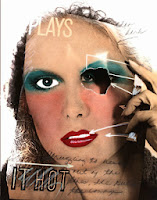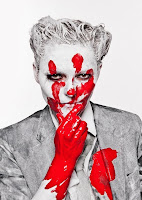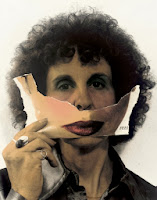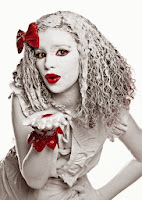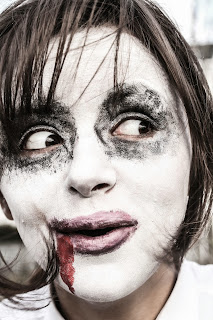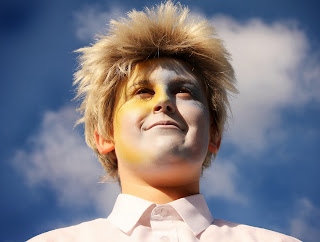This photo is just black and white, it's not very interesting but I like the lighting and shadows. I don't like how the focus is on the nose, it would look better if it was on the eye I think.
To create this image I took two photos and put them on separate layers. I set the top layer's blending type to difference which meant that in the areas where the photo overlapped, an inverted effect happened. The photo could show what's in a person and what they show like the genotype and phenotype of a human but sometimes they overlap and you see things you've not seen before.
I used the same double exposure effect on this photo except rather than choosing the difference blending mode I chose soft light. This created an effect that was similar to some of Edward&Me's photos. The double exposed faces are a lot fainter than the last photo, this makes it a lot more secretive, as if the two faces are what's really within the person but the person is trying to tame it. The black and white makes it quite melancholic, the emotive aspect is clearer in this one than the previous one because there's no colour to distract from the emotion.
With this photo I was just trying out new adjustments that I hadn't looked at before. Here I've applied a posterise effect which brought out some of the contours in the ace.
This photo hasn't actually been manipulated, just converted to black and white. The subject's face is all squashed and dented due to the velocity, they spun their head fast enough to pull the skin and create this effect.
This is an even subtler double exposure photo, it looks as if the other face has just been caught at a more define point. Really I just did the same thing I did with the three heads but with two heads further in motion.
I think this photo is quite representative of body disassociation, as if you're looking at yourself as a stranger but getting lost and confused. Not really very fantastic but quite strange.
I used the liquify tool in this one to pull the face down. It's my least favourite of the photos, I don't really like it at all but it just shows experimentation.
Here I've lowered the vibrance, saturation, and warmth .
The undersides of tongues have a really cool colour palate, the reds and blues I've made even more vivid by increasing the vibrance and saturation. To deepen the lines I've increased the clarity.
To make this photo I just reduced the blue and green channels to 0 which made it only red and black. It looks quite creepy, like something from an independent film poster. I like using a block colour with black because it creates a really bolding effect.









